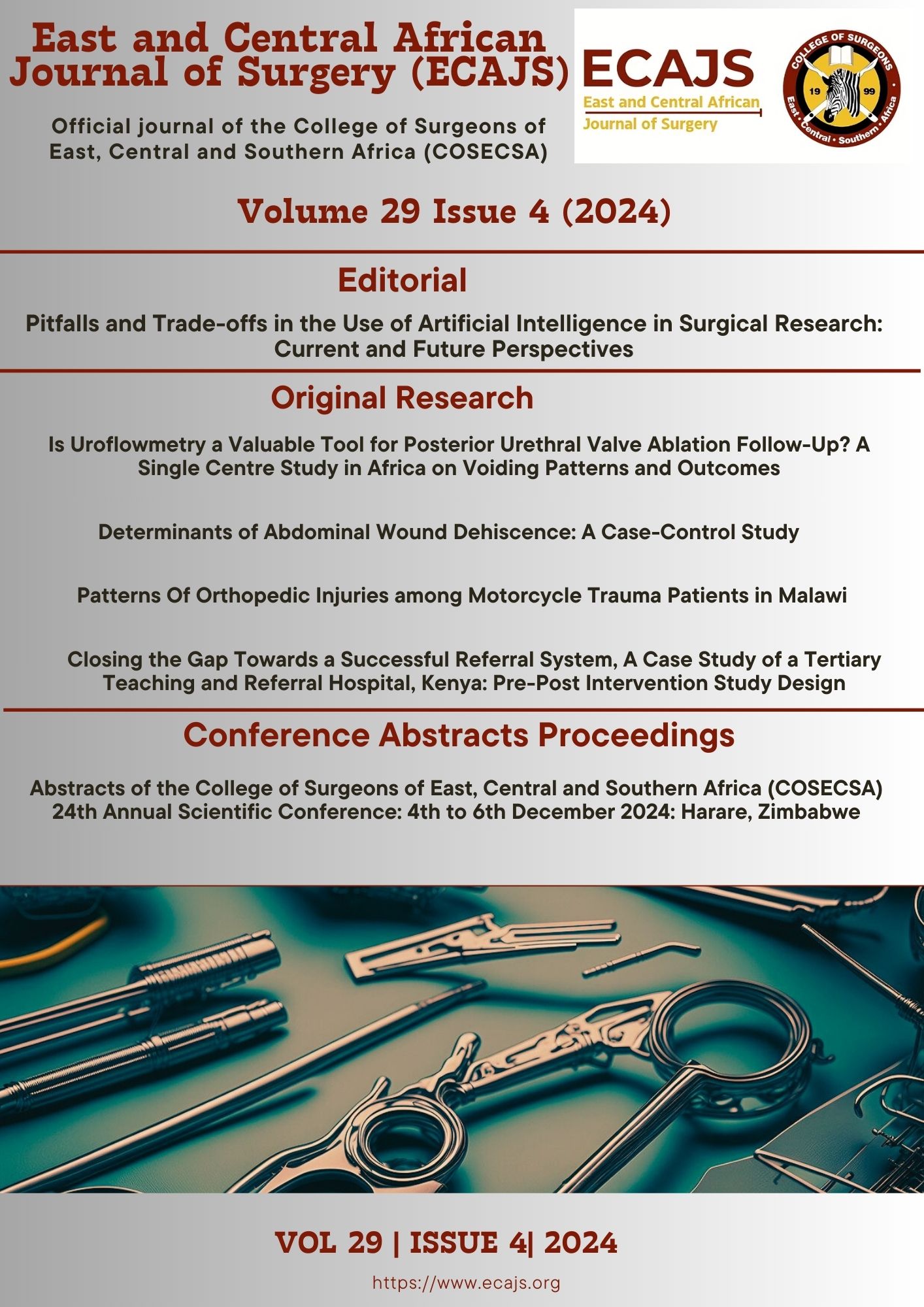Main Article Content
Is Uroflowmetry a Valuable Tool for Posterior Urethral Valve Ablation Follow-Up? A Single Centre Study in Africa on Voiding Patterns and Outcomes
Abstract
Background
In newborn males, posterior urethral valves are a common cause of lower urinary tract obstruction causing long-term urological problems despite prompt endoscopic valve ablation. Uroflowmetry is an inexpensive, simple, and non-invasive follow-up urodynamic test that can evaluate the bladder and urethra’s functionality post-valve ablation. This study sought to establish uroflowmetry as a valuable tool for patient follow-up by describing its patterns post-valve ablation at Kenyatta National Hospital.
Methods
A cross-sectional study was conducted on participants who underwent valve ablation from January 2014 to December 2020 at Kenyatta National Hospital and had completed toilet training. The uroflowmetry test was conducted according to the International Children’s Continence Society standards for uroflowmetry. Data on demographics, voided volume, Q max, flow curve pattern, and post-void residual urine were analyzed with SPSS Version 26.0. Continuous data were presented as means and medians, while categorical data were shown as frequencies and percentages. Relationships and differences were explored using chi-square and paired sample t-tests.
Results
Out of 59 patients, 24 completed the uroflowmetry test, with a mean age of 6.6 years. There was a significant difference between the mean voided volume (139.08 mL (SD = 90.028) and mean expected bladder capacity (257.08 mL (SD = 98.576) (p < 0.001) post valve ablation, but no significant difference between observed (11.72 mL/s) and expected Q max (11.26 mL/s) (p = .596). Significant post-void residual was observed in 19 boys (79%).
Conclusions
Incorporation of uroflowmetry as a routine follow-up metric in LMIC protocols is valuable as it can provide useful adjuncts in detecting bladder dysfunction after valve ablation.







